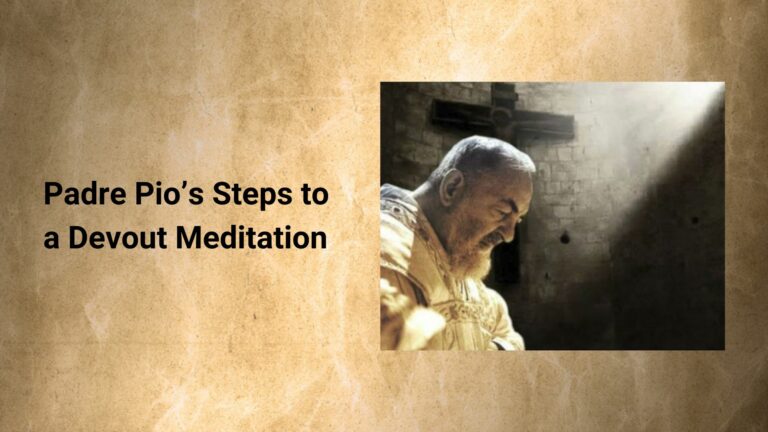
Padre Pio’s Steps to a Devout Meditation
Meditation is a cornerstone of spiritual growth, offering an opportunity to connect deeply with God and reflect on our faith. Among the many saints who have shared wisdom on prayer and contemplation, Padre Pio stands out as a guide whose teachings continue to inspire. In one of his letters to Maria Gargani, a spiritual daughter, Padre Pio outlines six transformative steps to meditation. These steps serve as a practical guide for anyone seeking to strengthen their spiritual life.
Step 1: Prepare the Subject of Your Meditation
Padre Pio begins by emphasizing the importance of preparation. He advises that you don’t necessarily need a book, as every truth of our faith can serve as a subject. Focus on key moments in Jesus’s life, such as His passion and death. By choosing a meaningful theme, you can anchor your thoughts and avoid wandering during meditation.
Step 2: Seek Divine Assistance
Prayer is essential for fruitful meditation. Padre Pio encourages us to ask God for the grace to meditate well. This step also involves invoking the help of the Blessed Virgin and the heavenly court to shield us from distractions and temptations. A sincere prayer for focus and clarity sets the tone for a more meaningful experience.
Step 3: Dive Deep into the Theme
Once prepared, delve into every detail of the chosen subject. Meditation isn’t about surface-level engagement; it’s about immersing yourself in the richness of the theme. Whether contemplating Christ’s suffering or God’s boundless mercy, allowing your mind to explore these truths fosters a deeper connection with your faith.
Step 4: Make Resolutions
Padre Pio’s fourth step involves introspection and action. Reflect on personal imperfections and resolve to overcome specific flaws. Choose a virtue to cultivate and remain committed to this goal until it’s achieved. This practical approach transforms meditation into a catalyst for personal growth and holiness.
Step 5: Pray for Others
Prayer must extend beyond oneself. Padre Pio urges us to pray for humanity—living and deceased, believers and unbelievers alike. He highlights the importance of interceding for the restoration of God’s Kingdom, the triumph of the Church, and the conversion of sinners. Such prayers not only elevate meditation but also foster compassion and a sense of global unity.
Step 6: Reflect and Seek Forgiveness
After meditating, Padre Pio advises a quick self-examination. Assess the quality of your meditation and humbly ask for forgiveness if it was flawed. This act of humility deepens our relationship with God, reminding us of His grace and our dependence on Him.
Daily Meditation: A Spiritual Practice
Padre Pio concludes with a recommendation to meditate twice daily—once in the morning to prepare for the day’s challenges and again in the evening to purify the soul. Dedicating at least 30 minutes to these sessions can profoundly enrich one’s spiritual journey.
Incorporating Padre Pio’s Wisdom into Your Life
Padre Pio’s steps to meditation provide a practical framework for cultivating a meaningful spiritual life. As we embrace these practices, we open our hearts to God’s presence, grow in humility, and strengthen our commitment to living virtuously.
By following these steps, the act of meditation transforms into a powerful tool for personal and spiritual renewal. These practices can help deepen your relationship with God and foster a life rooted in faith and love.

